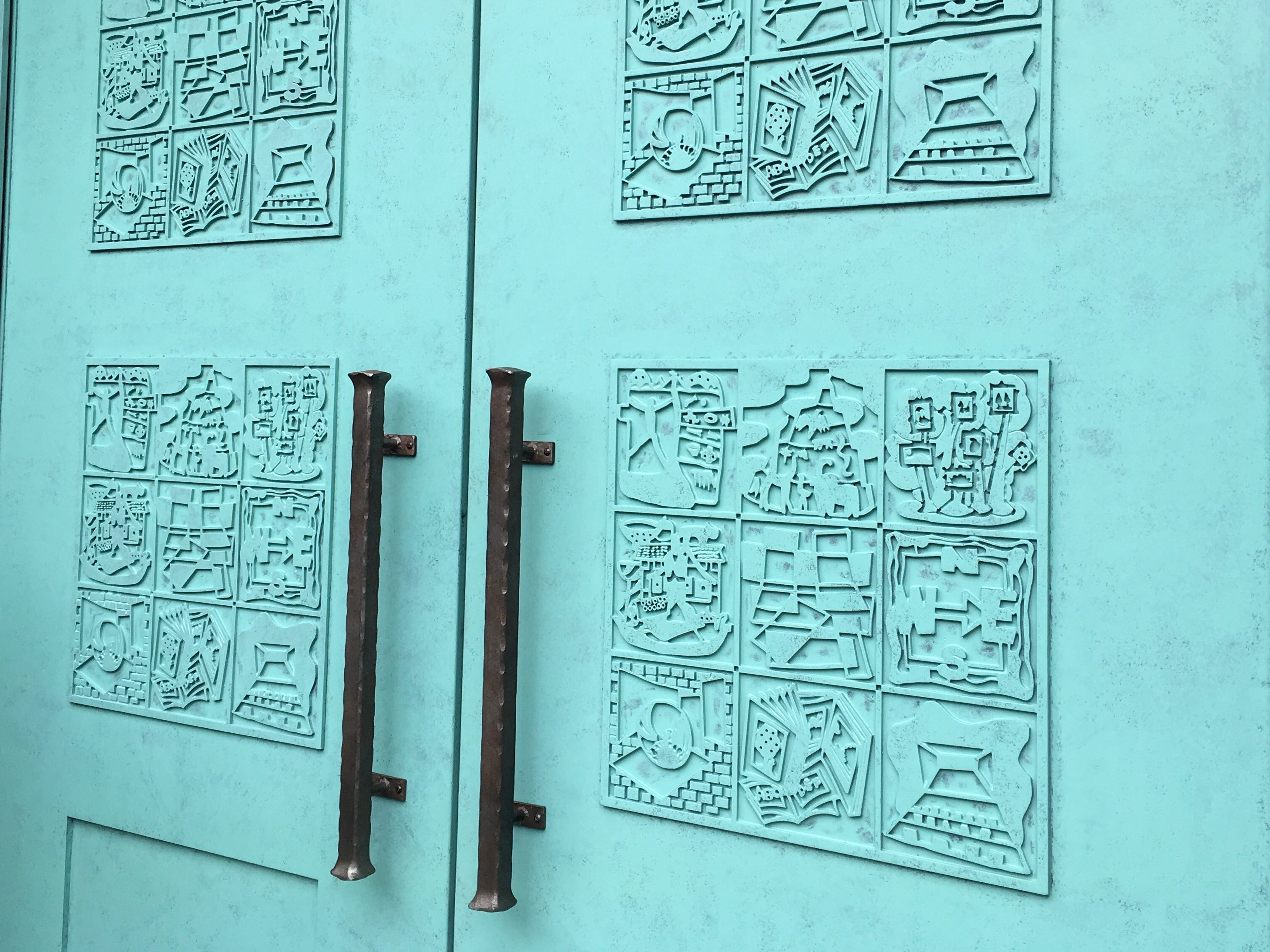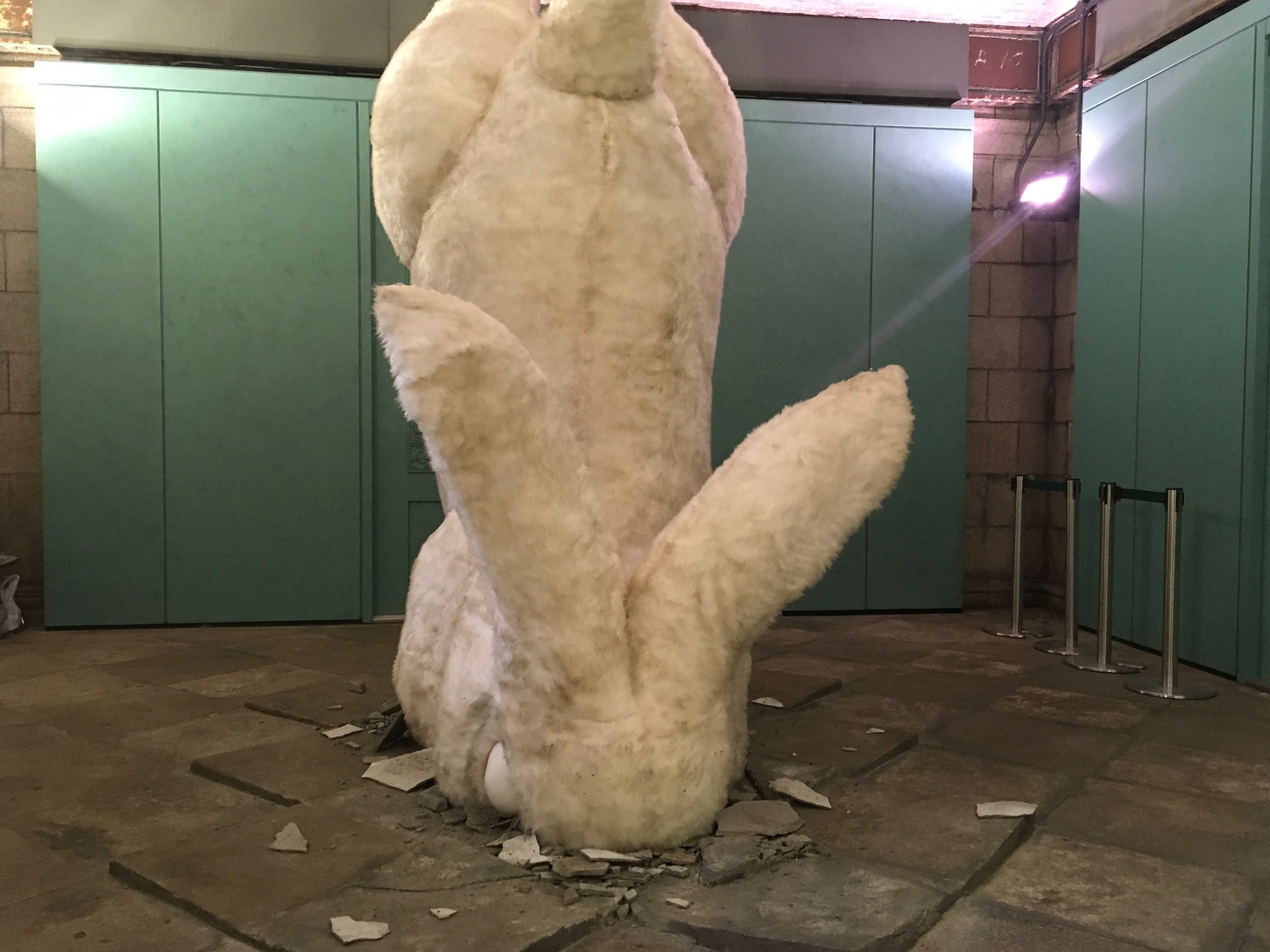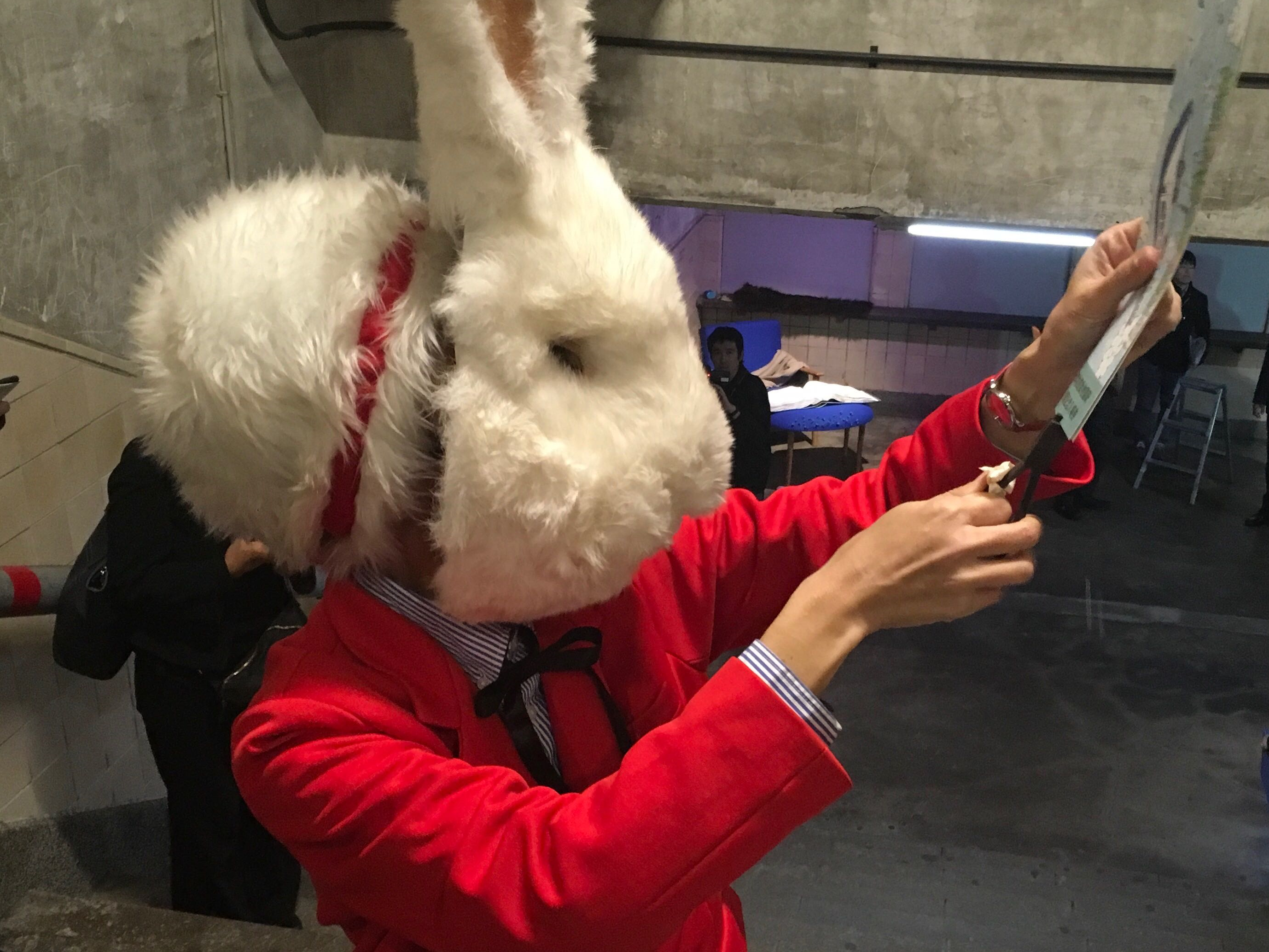This building is standing side by side with the Tokyo National Museum, across from Ueno Park.

It used to be the Keisei Electric Railway Former Hakubutsukan-Dōbutsuen Station which has been used as the nearest station of the Tokyo Imperial Museum (now the Tokyo National Museum) and the Imperial Ueno Zoo.
Along with the decrease in users, it had been suspended business in 1997. In April 2018, as a building with a historically important landscape value, it was the first railway facility which is selected as Tokyo Metropolitan Selected History Building.
Renovation work was carried out on this machine, furthermore, Tokyo National University of the Arts, Department of Art Department manager, UENOYES * A comprehensive producer, Mr. Katsuhiko Hibino, designed the door.
* Art project with the theme of social inclusion. With the aim of new social participation of people from the beginning of culture, regardless of disability, with various people from races and countries, from children to adults, develop various programs throughout the year, from Ueno We are disseminating it to the world.
On November 23, 2018, a part of Keisei Electric Railway old museum zoo station building will be opened to the public. At the same time, within the station building, a limited-time installation work Wandering into the Rabbit Hole will be displayed as a Historical Cultural Resource Utilization Program that is part of the UENOYES project.
I participated in a press tour that was held prior to that, so I will tell you the situation.
Let’s open the new door and go inside.


When you open the door, there is a huge rabbit!


Because the ticket gate of the old museum zoo station is in the basement, this work have a motif of a rabbit who has habits of digging soil and creating a nest.












The story that Ms.Shiratama Hitsujiya written down on Ueno's research was written by Ms. Akiko Sakata of art and was supported by the technical scientist of Mr. Kento Mori, a scientific museum · support researcher at the National Science Museum · Animal Research Division Exhibition.

Both Ms.Hitsujiya and Ms.Sakata say that this station building is a "space inspired by artists".
Mr. Mori says that he usually creates skeletal specimens by 3D scan and printer and has thought that it would be great if he chould show his works to the public. When Ms.Hitsujiya talkes about this project, he accepted immediately. It was in 1997 that the old museum zoo station stopped operating, but due to the idea of Mr. Mori, the genuine exhibition of the skull of Huang Huan of the giant panda who died the same year came true.
In this way the installation work “Wandering into the Rabbit Hole” . There is a unique world view that draws in what you see from the moment you open the door.
You can actually touch the entrance rabbit or book, the skull replica, and you can do graffiti on the glass.
Even those who have never used the old museum zoo station, you will be able to enjoy the work with a thought on the history of the station building.
Since it will be a limited-time exhibition until February 24, 2019, how about going to the old museum zoo station on this occasion?
Publication and exhibition of Former Hakubutsukan-Dōbutsuen Station “Wandering into the Rabbit Hole” Summary
| A session | Every Friday, Saturday and Sunday from November 23, 2018 (Friday, congratulation) to February 24 (Sun) in 2019 ※ 39 days in total excluding December 28 to 30 |
| time | 11: 00 ~ 16: 00 ※ The final admission is until 15:30 (Capacity system · Replacement system when crowded) |
| place | Former Hakubutsukan-Dōbutsuen Station |
| Admission fee | free |
Related events will also be held. Please check the official website for details.
This article provided by kokosil Ueno

